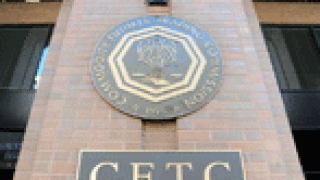Derivs - Regulation
-
Demand in the Canadian derivatives markets is increasing as investors are drawn to the country’s financial stability, creditworthy banking system, proximity to the US and strong regulatory infrastructure. There has accordingly been a substantial growth in futures markets tied to the country’s natural resources and commodities trade, driven by both domestic and international investors.
-
Regulators demand numerous know-your-customer checks to be performed and accurate client and counterparty data checks be made. Not only do firms need to make substantial changes to their internal processes to meet these requirements, they must ensure that the counterparty and client data they hold is accurate from the outset and then efficiently managed forevermore. Legal entity data management is far from a simple task, however, and with a swathe of risk management and investor transparency requirements due to come into force over the coming years, firms need to give this critical activity some serious attention. To read the full Learning Curve titled ‘The big data challenge: firms must act now’ written by Mark Davies, general manager and head of Avox, please go to www.globalcapital.com/derivatives/learning-curves.
-
The US Commodity Futures Trading Commission has reopened the comment period for the much debated position limits following several years of deliberation, which is expected to result in new proposed rules or a new final rule, according to lawyers.
-
Regulatory co-ordination between different authorities in Canada has helped market participants implement the trade reporting rules for over-the-counter transactions that came into effect on October 31.
-
LCH.Clearnet has partnered with Baltic Exchange and Cleartrade Exchange to clear OTC commodity derivatives as block futures in dry bulk freight forward agreements (FFAs). This move has been driven by market demand as participants adapt their trading strategies in the face of regulatory hurdles.
-
GFI Group has launched dollar-denominated market agreed coupon (MAC) swaps on its swap execution facility. The firm now offers live tradable prices for such contracts in a central limit order book on its electronic trading platform known as RatesMatch.
-
The derivatives exposure method in the recently issued Basel III Leverage Ratio Framework and Disclosure Requirements may hit firms' ability to use cleared derivatives to hedge risk, two industry bodies believe.
-
Institutional investors such as pension funds are increasingly interested in futures and exchange traded funds on MSCI minimum volatility factor indices based off its equity market indices, including the MSCI emerging market futures index.
-
The overall interest rate derivatives trading volume reported to swap data repositories last week fell by 18% from the previous week, according to data from the International Swaps and Derivatives Association (ISDA). This follows a week of modest increases in trading volumes.
-
One institutional investor was seen picking up a sizeable put spread on AT&T following increased options activity in telecoms last week.
-
Agency trading is an important tool for avoiding basis risk in package trades, especially for the more complex structures that are yet to be made available to trade on swap execution facilities (SEFs), according to speakers at the Sefcon V conference in New York.
-
The Commodity Futures Trading Commission needs to grant permanent registration for swap execution facilities in order to avoid hindering the evolution of businesses following the implementation of Dodd-Frank. Additionally, the slew of continuing no-action letters is resulting in regulatory uncertainty, according to speakers at SEFCON V.


